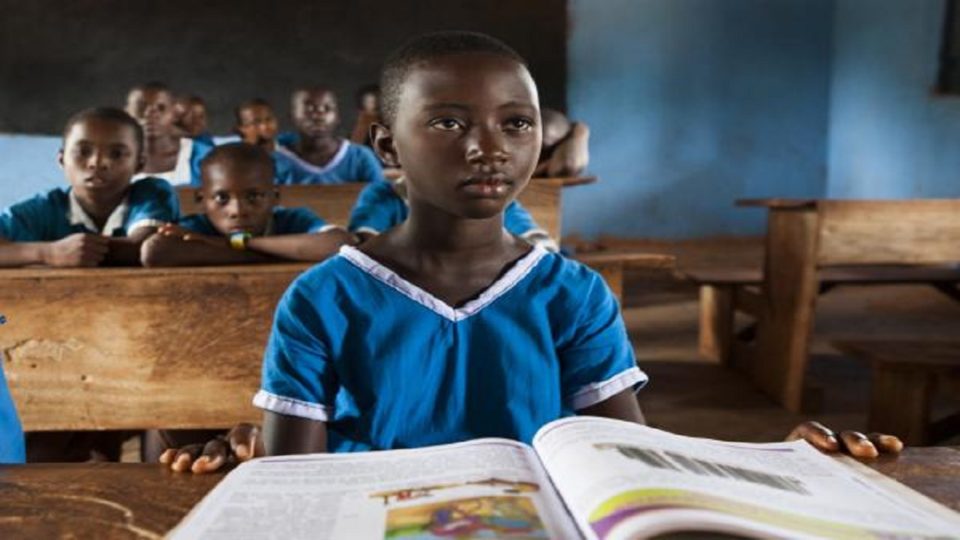A Paper Presented By Chidinma Orjiakor At Opinions From Africa Research Department (#ResearchwithPet)- During An Online Conference On Learning Disabilities Encountered By Children.
Host – Jidechukwu Angela Nwabueze
INTRODUCTION
Let me begin with a story
In my 5 years of teaching experience, I have dealt with children with different learning disabilities. That is, I have encountered children with dyslexia, dyscalculia, the slow writers, the not-in-the mood to learn today, the hyperactive, and the quiet kids. But there was this particular child that struck me most- Chidera, yea, that’s her name.
She was beautiful but so quiet. On the first day she was brought to my class and was handed over to me as her tutor, she didn’t cry. I expected her to cry ‘cos that was what kids in kindergarten do on their first day at school. But Chidera was different. She didn’t cry. She simply chose a quiet corner in the class and sat without making eye contact with anyone.
During rhymes, she only stared without saying a word and I thought to myself, “Maybe she was trying to settle in”. Fast forward to a week, she would come to class without talking to anyone still. I silently observed her. “What could be wrong with the child”, I imagined. This time, I knew it wasn’t a matter of trying to settle.
Surprisingly, when building blocks are shared, she would stack as many as possible, only smiling and talking to herself. “Maybe this child is passing through a sort of trauma”, I said this time. But I was scared. As a teacher, I guess I should. Why will a child not talk to anyone? Why will a child who is neither deaf nor dump not talk to people but herself?
Though I was scared, I was equally happy that she could at least smile and talk to herself. The funny fact is that she would laugh when you are angry and serious but when you are smiling, she is indifferent. Sometimes you ask her a question that you expect her to know; she would tell you something else.
This broke my heart. I never knew she was a child that requires a special kind of teaching. Was she trying to frustrate me? I had beat her out of anger but to no avail. She seemed not to improve. But one good thing was that she was good with words, and could say words even an adult couldn’t pronounce.
I however, managed to get to her parent who told me she has a disability, and that she has been seeing a therapist since she was diagnosed of non- verbal learning disability. I further researched on it and with my findings.
I tried to put her interest also while making my lesson, because I noticed she was a good audio learner, as she tends to repeat certain things I say. However things took turn for the best, she was able to cope with lesson, yet she still found it a little difficult to mingle with other pupils. But at least, she was better.
From the story above, you will observe that some students who tend to not do well in class are actually facing learning disabilities that are affecting their intelligence or social functioning. Thus, children and adults with learning disabilities see, hear, and understand things differently. Also, learning disabilities vary from one child to another.
One child may struggle with reading and spelling, while another loves reading but cannot understand mathematics. Still, another child may have difficulty understanding what others are saying or communicating out loud.
Whichever one it is, the important thing to know is that most children with learning disabilities are just smart as everyone else. They just need to be taught in ways that are tailored to their unique learning styles.
Today, the learning disability that I will be exploring is the Non-verbal learning disabilities. To understand the topic of discussion better, let’s synthesize it.
What do we mean by non-verbal?
Non-verbal means not involving word or speech, but includes facial expression, the tone and pitch of the voice, gesture displayed through body language (kinesics) and the physical distance between the communicators (proxemic). Non verbal signals can give clues and additional information and meaning.
Who are non-verbal learners?
These are kids who have trouble interpreting non verbal cues like facial expression or body language and may have poor coordination. It is also characterized by verbal strength as well as visual spatial, motor and social skills difficulties.
What then is non-verbal learning disability?
Non-verbal learning disability is a neurological condition marked by difficulties interpreting non-verbal cues like facial expression, the tone and pitch of the voice, and gestures displayed through body language.
Non-verbal learning disability does not mean being dumb (temporary unable or unwilling to talk). Funny enough, people diagnosed with non-verbal learning disability are adept with language, verbal reasoning, and rote learning. Their biggest problem is with their inability to manipulate social skills, visual-spatial skills, and motor skills.
Sometimes, non-verbal learners are diagnosed with other co-occurring problems such as ADHD (Attention Deficit/Hyperactivity Disorder), GAD (Generalized Anxiety Disorder), DCD (Developmental Coordination Disorder), and specific learning disorder in mathematics.
The possible cause of non-verbal learning disability has not been identified. It is thought to be a development disorder related to the right hemisphere of the brain, That is, that part of the brain that integrates information from several senses at once.
However, the cause of non-verbal learning disability can be associated with other kind of learning disabilities like dyscalculia (a disability resulting in difficulty in understanding numbers, learning how to manipulate numbers, performing mathematical calculations and performing mathematical calculations), dysgraphia (deficiency associated with impaired handwriting, orthographic coding, and finger sequencing), and dyspraxia (a neurological disorder known to affect planning of movements and coordination as a result of brain messages not being accurately transmitted to the body).
This is usually the reason while those diagnosed with non-verbal learning disabilities would laugh when you are angry and serious, and then become indifferent when you smile. Thus, people who are ignorant of this fact about non-verbal learning disability refer to those diagnosed of the disability as being disrespectful, too stubborn, or being distracted from their environment.
How do you identify a child suffering from non-verbal learning disability?
The following signs could be a possible cue to identifying a child who has difficulties interpreting verbal cues:
- Early speech and language acquisition (That is, they have great vocabulary and verbal expression)
- Attention to details, but misses the big picture (That is, they think in literal terms and struggle with metaphors or abstract concepts). For instance, they might find it difficult interpreting, “he kicked the bucket” as someone dying.
- They have trouble understanding reading. That is, they struggle with reading comprehension due to the fact that they need to verbalize things to understand them.
- They are physically awkward as a result of brain messages not being accurately transmitted to the body. For instance, they usually bump into objects or people.
- They have poor fine motor skills (That is, they find it difficult manipulating things that would involve the movements and actions of the muscles. For instance, they may experience difficulties using scissors or tying shoe lace).
- They find it difficult socializing due to their inability to interpret social cues.
- They usually suffer from anxiety, depression, and low self esteem.
What could be the possible treatment of non-verbal learning disability?
There is no treatment for nonverbal learning disability but there are ways to help those suffering from this kind of disability. These ways include;
A. Use of therapies
- Language Therapy: This is the most common treatment for non-verbal learning disability. Here, the child may participate in one-on-one treatment sessions with a speech therapist or attend group sessions.
- Psychological Therapy: This involves counseling sessions to address emotional or behavioural issues of a child diagnosed with non-verbal learning disability. These emotional or behavioural issues could be anxiety, depression, low self-esteem, anger issues and so on.
- Occupational Therapy: This involves the use of assessment and intervention to help people develop self care routines like getting dressed (fine motor skills and motor planning), writing and copying notes (fine motor skills and hand- coordination), holding and controlling a pencil, using scissors etc
- Physical Therapy: This involves helping individuals develop, maintain and restore maximum body movement and physical function.
- Speech Therapy: This involves the use of intervention to improve communication between them and others.
B. Home Care Options:
These includes activities like keeping the atmosphere relaxed for the child to reduce anxiety; making use of the child’s verbal skills to help with social interactions and non-verbal experiences; teaching the child about non-verbal communication; being clear and logical by avoiding the use of jargon, double meanings, sarcasm, nicknames, and teasing.
C.Shool Care Options:
- Shorten homework/assignment.
- Pair the child with a classmate who can fill in missing class notes and explain the pacing of long-term project.
- Ensure a supervised recess, lunch, and excursion to prevent bullying and intimidation from peers.
- Due to their anxiety problems, test should be taken untimed and in an area free from distraction.
In conclusion, a child suffering from non-verbal learning disability does not mean that he/she is worthless. They simply need to be provided with accommodations that would enable them cope and learn. Thus, with proper teaching-learning environment, people diagnosed with non-verbal learning disability are opened to wide range of job opportunities like teaching, singing, painting, scientific researching, and even writing.
Thus:
“If a child cannot learn the way we teach,maybe we should teach the way they learn”
– Ignacio Estrada.




